A stunt performer, often referred to as a stuntman, stuntwoman, or daredevil, is a trained professional who performs stunts, often as a career.
 Pyrotechnics stunt exhibition by "Giant Auto Rodéo", Ciney, Belgium | |
| Occupation | |
|---|---|
| Names | Stunt performer, stuntman, daredevil |
Activity sectors | 0p Entertainment |
| Description | |
| Competencies | Physical fitness, daring, acting skills |
Fields of employment | Film, television, theatre |
Related jobs | Stunt double, stunt coordinator, actor, movie star, extra |
Contents
Overview
A stuntman typically performs stunts intended for use in a motion picture or dramatized television. Stunts seen in films and television include car crashes, falls from great height, drags (for example, behind a horse), and explosions.
There is an inherent risk in the performance of all stunt work. The most risk exists when performing stunts in front of a live audience. In filmed performances, visible safety mechanisms can be removed by editing. In live performances the audience can see more clearly if the performer is genuinely doing what they claim or appear to do. To reduce the risk of injury or death, most often stunts are choreographed or mechanically-rigged so that, while they look dangerous, safety mechanisms are built into the performance. Despite their well-choreographed appearance, stunts are still very dangerous and physically testing exercises.
From its inception as a professional skill in the early 1900s to the 1960s, stunts were most often performed by professionals who had trained in that discipline prior to entering the movie industry. Current film and television stunt performers must be trained in a variety of disciplines including martial arts and stage combat, and must be a certified trained member of a professional stunt performers organisation first, in order to obtain the necessary insurance to perform on stage or screen. This allows them to better break down and plan an action sequence, physically prepare themselves, and incorporate both the safety and risk factors in their performances. However, even when executed perfectly, there is still strain and performing stunts often results in unplanned injury to the body.
Daredevils are distinct from stunt performers and stunt doubles; their performance is of the stunt itself, without the context of a film or television show. Daredevils often perform for an audience. Live stunt performers include escape artists, sword swallowers, glass walkers, fire eaters, trapeze artists, and many other sideshow and circus arts. They also include motorcycle display teams and the once popular Wall of Death. The Jackass films and television series are well-known and prominent recorded examples of the act in modern cinematography.
Some people, such as Buster Keaton, Harry Houdini, Jackie Chan, Akshay Kumar, Pawan Kalyan, Tony Jaa, and Jayan, act as both stunt performers and daredevils at various parts of their career.
History
Cascadeur
The earliest stunt performers were travelling entertainers and circus performers, particularly trained gymnasts and acrobats. The origin of the original name, the French language word cascadeur, may have been derived from the requirement to fall in a sequence of movements during a scene or stunt involving water (Cascade is the French language term for waterfall)
Later, in the German and Dutch circus use of the word Kaskadeur, it meant performing a sequential series of daring leaps and jumps without injury to the performer. This acrobatic discipline required long training in the ring and perfect body control to present a sensational performance to the public.
The word stunt was more formally adopted during the 19th century travelling vaudeville performances of the early Wild West Shows, in North America and Europe. The first and prototypical wild west show was Buffalo Bill's, formed in 1883 and lasting until 1913. The shows which involved simulated battles with the associated firing of both guns and arrows, were a romanticized version of the American Old West.
Stage combat
During the late 19th and early 20th centuries, stage combat scenes of swordplay in touring theatrical productions throughout Europe, the Commonwealth of Nations and North America were typically created by combining several widely known, generic routines known as "standard combats". During the late 19th and early 20th centuries, fencing masters in Europe began to research and experiment with historical fencing techniques, with weapons such as the two-handed sword, rapier, and smallsword, and to instruct actors in their use.
Notable among these revivalist instructors were George Dubois, a fight director and martial artist from Paris who created performance fencing styles based on gladiatorial combat as well as Renaissance rapier and dagger fencing. Egerton Castle and Captain Alfred Hutton were part of a wider Victorian era group based in London, involved in reviving historical fencing systems. Circa 1899–1902, Hutton taught stage fencing classes for actors via the Bartitsu Club, where he also served on the Board of Directors and learned the basics of jujutsu and the Vigny method of stick fighting from his fellow instructors.
Early cinema
By the early 1900s, the motion picture industry was starting to fire-up on both sides of the Atlantic Ocean, but had no need for professional stunt performers. First, motion pictures were so new that even if the producer had a budget for performers, there were more than enough applicants willing to do the scene for free. For instance, if you needed a shot of someone on a steel beam 1,000 feet (300 m) up on a New York skyscraper, then there was always some willing to do the scene for real, and often for free. Second, the Spanish–American War had just ended, and there were many physically fit and trained in the handling of firearms young men looking for some work. Thirdly, the former wild west was now not only tamed, but also starting to be fenced in, greatly reducing the need for and pay of the former cowboys.
The first picture which used a dedicated stunt performer is highly debated, but occurred somewhere between 1903 and 1910. The first possible appearance of a stunt-double was Frank Hanaway in The Great Train Robbery, shot in 1903 in Milltown, New Jersey. The first auditable paid stunt was in the 1908 film The Count of Monte Cristo, with $5 paid by the director to the acrobat who had to jump upside down from a cliff into the sea.
Professional daredevil, Rodman Law, was a trick parachutist known to thousands for climbing the side of buildings and parachuting out aeroplanes and off of tall base objects like the Statue of Liberty. Some of his stunts were filmed by newsreel cameras and media still photographers. Law was brought into movies in 1912 to perform some of his stunts as the hero.
As the industry developed in the West Coast around Hollywood, California, the first accepted professional stuntmen were clowns and comedians like Charlie Chaplin, Buster Keaton and the Keystone Kops. The reason for this was that staple diet of the early films was an almost continual roll call of pratfalls, high dives and comedy car wrecks – the basic ingredients of a circus clown's routine. But much like their circus-based predecessors, these actors/stuntmen were not specifically trained to perform stunts, but instead learned through trial and error.
Cowboy professionals
From 1910 onwards, American audiences developed a taste for action movies, which were replicated into successful serials. These mostly western-themed scripts required a lot of extras, such as for a galloping cavalry, a band of Indians or a fast riding sheriff’s posse; all of whom needed to proficiently ride, shoot and look right on camera.
Producers also kept pushing the directors calling for riskier stunts using a recurring cast, necessitating the use of dedicated stunt doubles for most movie stars. The directors turned to the current rodeo stars for inspiration for their action scenes, and employed former cowboys as extras who not only brought with themselves the right look and style, but also rodeo techniques that included safe and replicable horse falls.
Early recruits included Tom Mix, who after winning the 1909 National Riding and Rodeo Championship, worked for the Selig Polyscope Company in Edendale. Mix made his first appearance in The Cowboy Millionaire in October 1909, and then as himself in the short documentary film titled Ranch Life in the Great Southwest in which he displayed his skills as a cattle wrangler. Mix eventually performed in over 160 cowboy matinee movies during the 1920s, and is considered by many as the first matinee cowboy idol.
The recruitment venture was aided in 1911 by the collapse of the Miller-Arlington rodeo show, that left many rodeo performers stranded in Venice, California. They including the young Rose August Wenger, who married and was later billed as Helen Gibson, recognised as the first American professional stunt woman. Thomas H. Ince, who was producing for the New York Motion Picture Company, hired the entire show's cast for the winter at $2,500 a week. The performers were paid $8 a week and boarded in Venice, where the horses were stabled. They then rode the 5 miles (8.0 km) each day to work in Topanga Canyon, where the films were being shot. In 1912, Helen made $15 a week for her first billed role as Ruth Roland's sister in Ranch Girls on a Rampage. After marrying Edmund Richard "Hoot" Gibson in June 1913, the couple continued working rodeo's in the summer and as stunt doubles in the winter in California, most often for Kalem Studios in Glendale. In April 1915 while on the Kalem payroll doubling for Helen Holmes in The Hazards of Helen adventure film series, Helen performed what is thought to be her most dangerous stunt: a leap from the roof of a station onto the top of a moving train in the A Girl’s Grit episode. The distance between station roof and train top was accurately measured, and she practiced the jump with the train standing still. In the actual shoot, with the trains accelerating velocity timed to the second, she leapt without hesitation and landed correctly, but with forward motion she rolled forward, saving herself from injury and improving the shot by catching hold of an air vent and dangling over the edge. She suffered only a few bruises.
Eventually, the out of work cowboys and out of season rodeo riders, and the directors/producers, figured out a system for the supply of extras. A speakeasy called The Watering Hole was located close to a Los Angeles located corral called the Sunset Corral. Every morning, the cowboys would congregate at The Watering Hole, where the directors would send over their assistants to hire for the following day. The cowboys would then dress in their normal riding clothes (unless told other wise, for which they were paid extra), and ride to the set, most of which were located to the north in the vicinity of the San Fernando Valley. These "riding extras" jobs paid $10 per day plus a box lunch, and most were only hired on a per day basis. These early cowboy actors eventually gained the nickname The Gower Gulch Gang, as many of the small studios cranking out westerns were located on Gower Avenue.
Subsequently, a number of rodeo stars entered the movie industry on a full-time basis, with many "riding extras" eventually becoming movie stars themselves, including: Hank Bell (300 films, between 1920 and 1952); Bill Gillis; Buck Jones; Jack Montgomery (initially worked as Tom Mix's body-double); and Jack Padjeon (first appeared in 1923, played Wild Bill Hickok in the John Ford directed The Iron Horse in 1924). But the best known stuntman turned star was probably Yakima Canutt, who with his apprentices - who included John Wayne - devised during the 1930s new safety devices, including: the 'L' stirrup which allowed a rider to fall off a horse without getting hung in the stirrup; and cabling equipment to cause spectacular wagon crashes, while releasing the team. A focus on replicable and safe stunts saved producers money and prevented lost down-time for directors through reduced accidents and injury to performers. Stuntmen were now an integral part of a films drawing power, helping to fill cinemas with thrill seeking patrons anxious to see the new Saturday matinee.
Safety Last!
Producer/actor Harold Lloyd's film Safety Last! of 1923, is often considered one of the first to deploy thought-through safety devices and pre-planning in the execution of its filming and stunts. In the script, Lloyd's "country boy" character goes to the city to be a success, and ends up climbing a tall b
Watch movie Stuntman online on Amazon
Watch movie Stuntman online
Watch The Movie On PrimeA Wednesday Full HD Movie Download
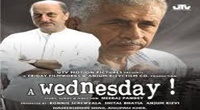
Luck By Chance Full HD Movie Download

Kal Kissne Dekha Full HD Movie Download

Joggers Park Full HD Movie Download

Bhanwar Full HD Movie Download
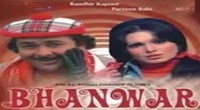
Aag Ka Gola Full HD Movie Download
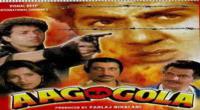
Takkar (1980) Full HD Movie Download
.jpg)
Hum Sub Chor Hain (1956) Full HD Movie Download
.jpg)
Chak Jawana Full HD Movie Download
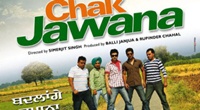
One Man Army-Gulami Full HD Movie Download

Doragariki Donga Pellam Full HD Movie Download
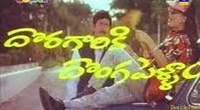
Agni Satchi Full HD Movie Download

Kodanda Ramudu (2000) Full HD Movie Download
.jpg)
The Blind Side Full HD Movie Download
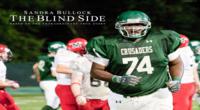
Jigar Baaz Full HD Movie Download
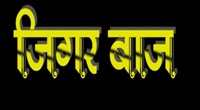
Aanaval Mothiram Full HD Movie Download
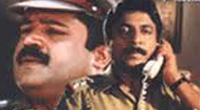
Success Full HD Movie Download

Muddula Koduku Full HD Movie Download
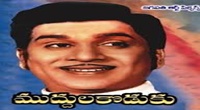
Aadavallu Aligithe Full HD Movie Download
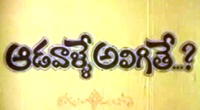
Cinema Pichollu Full HD Movie Download
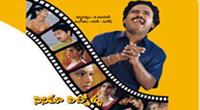
Naatakame Ulagam Full HD Movie Download

Download latest Movie from bollywood
- 1> baaghi 3
- 2> THE SKY IS PINK MOVIE FULL STORY AND REVIEW
- 3> Luka Chuppi
- 4> TO ALL THE BOYS I’VE LOVED BEFORE
- 5> Kabir Singh
- 6> Street Dancer 3D
- 7> Simmba
- 8> Gone Girl
- 9> The Girl Who Lived
- 10> Ludo
- 11> DILWALE DULHANIA LE JAYENGE
- 12> GUILTY
- 13> The Godfather
- 14> Adventures of Rusty
- 15> Sooryavanshi
- 16> Satyameva Jayate 2
- 17> Thappad
- 18> Bhool Bhulaiyaa 2
- 19> KGFChapter 2
- 20> Mardaani 2
- 21> Pinjar
- 22> Shivaji maharaj
- 23> Ek Villian 2
- 24> Hungama 2
- 25> Divergent
- 26> Mumbai Saga
- 27> The Internship
- 28> HIT (telugu)
- 29> Panga
- 30> The perfect date
- 31> 16 December
- 32> Gopala Gopala (Telugu)
- 33> Brahmastra
- 34> Gangubai Kathiawadi
- 35> Manmadhudu
- 36> Nenu local
- 37> Mahanati
- 38> Shatamanam bavathi
- 39> Lagaan
- 40> After
- 41> MOM
- 42> Shamshera
- 43> Raguvaran BTech
- 44> Khakee
- 45> The villain
- 46> OM
- 47> Mr. perfect
- 48> Bueatifull mind
- 49> Hichki
- 50> Gabbar Singh
- 51> Jogi
- 52> Before Sunrise
- 53> Before Sunset
- 54> Before Midnight
- 55> The Big Bull
- 56> Top Gun: Maverick
- 57> The Purge
- 58> The Sky is Pink
- 59> Laxmmi Bomb
- 60> Sadak 2
- 61> Sufna
- 62> Prithviraj
- 63> PK
- 64> Coolie No 1(2020)
- 65> Black Widow
- 66> Dear Zindagi
- 67> Dil Bechara
- 68> PHIR HERA PHERI
- 69> WAR
- 70> Dostana
- 71> RRR: Roudram Ranam Rudhiram
- 72> Maidan
- 73> Dabbang 3
- 74> Chhalaang
- 75> life as we know it
- 76> SherShaah
- 77> Sandeep Aur Pinky Faraar
- 78> Event Horizon
- 79> 83
- 80> Radhe: Your Most Wanted Bhai
- 81> Gunjan Saxena: The Kargil Girl
- 82> Mr India
- 83> Vivah
- 84> Anokha Bandhan
- 85> Ghost
- 86> Bhoot: Part One - The Haunted Ship
- 87> Haseen Dilruba
- 88> Laal Singh Chaddha
- 89> Qismat
- 90> Rajput
- 91> Drive
- 92> Dil Chahta Hai
- 93> Dil Ki Baazi
- 94> Dil Ka Rishta
- 95> Teesri Manzil
- 96> Dil
- 97> Love Aaj Kal
- 98> Khaali Peeli
- 99> Bunty Aur Babli 2
- 100> Atrangi Re
- 101> Gulabo Sitabo
- 102> Jodi
- 103> Suraj Pe Mangal Bhari
- 104> Deewana
- 105> Attack
- 106> Sardar Udham Singh
- 107> Toofan
- 108> THE LOVEBIRDS
- 109> Jersey
- 110> Ginny Weds Sunny
- 111> Thalaivi
- 112> Shiddat
- 113> Angels vs Zombies
- 114> Koi Mil Gya
- 115> Thank God
- 116> Bhuj: The Pride of India
- 117> Hum Aapke Hain Kaun
- 118> The Platform
- 119> Bird Box
- 120> Roohi Afzana
- 121> Torbaaz
- 122> Nikamma
- 123> World War Z
- 124> Extraction
- 125> Train to Busan
- 126> Life of Pi
- 127> SHAADI MEIN JROOR AANA
- 128> Himmat Aur Mehnat
- 129> To All The Boys: P.S. I Still Love You
- 130> Mimi
- 131> Good Newwz
- 132> Shubh Mangal Zyada Saavdhan
- 133> Raabta
- 134> Harry Potter and the Philosopher's Stone
- 135> Harry Potter and the Chamber of Secrets
- 136> Chhapaak
- 137> War of the Worlds
- 138> Harry Potter and the Prisoner of Azkaban
- 139> Harry Potter and the Goblet of Fire
- 140> MURDER MYSTERY
- 141> Shakuntala Devi
- 142> Bachchan Pandey
- 143> Jayeshbhai Jordar
- 144> Sheer Qorma
- 145> Saina
- 146> 'O' Pushpa I hate tears
- 147> Kedarnath
- 148> MS Dhoni The Untold Story
- 149> Chhichhore
- 150> Badhaai Ho
- 151> Unstoppable
- 152> Oz the Great And Powerful
- 153> The Girl on the Train
- 154> Haathi Mere Saathi 2020
- 155> The Conjuring: The Devil Made Me Do It
- 156> Gandhi Se Pehle Gandhi
- 157> The Song of Scorpions
- 158> Srimanthudu
- 159> Hello Guru Prema Kosame
- 160> Beauty and The Beast
- 161> Black Panther
- 162> Charlie and the Chocolate Factory
- 163> Bole Chudiyan
- 164> Fidaa
- 165> Duvvada Jagannadham
- 166> Bruce Lee: The Fighter
- 167> Hyper
- 168> Yaara
- 169> Red (2020)
- 170> Shivam
- 171> That Is Mahalakshmi
- 172> Nishabdham
- 173> Aashram 2020 web series
- 174> Laxmii
- 175> Mismatched
- 176> STUDENT OF THE YEAR 2
- 177> NAIL POLISH
- 178> Ramprasad Ki Tehrvi
- 179> KAAGAZ
- 180> 12 o Clock
- 181> The Power
- 182> bolo hau
- 183> Tribhanga
- 184> JAMUN
- 185> Madam Chief Minister
- 186> Maasaab
- 187> Aadhaar
- 188> Tanhaji
- 189> Bhaagi 3
- 190> Bhootnath
- 191> MALANG
- 192> Jai Mummy Di
- 193> Haathi Mere Saathi 2021
- 194> Shakeela
- 195> Unpaused
- 196> Annayya
- 197> Vamsoddharakudu
- 198> Mrugaraju
- 199> Narasimha Naidu
- 200> Sankranti
- 201> Manasu Maata Vinadhu
- 202> Anjaane
- 203> Apaharan
- 204> Bachke Rehna Re Baba
- 205> Bewafaa
- 206> Roohi
- 207> Radhe
- 208> Zindagi Khoobsoorat Hai
- 209> Yeh Mohabbat Hai
- 210> Yeh Kya Ho Raha Hai?
- 211> The Tomorrow War
- 212> DehradunDiary
- 213> Meri Shaadi Karaoo
- 214> Matruu Ki Bijlee Ka Mandola
- 215> No One Killed Jesica
- 216> Aag Ka Goola
- 217> Eight Million Dollars
- 218> Three Hundred
- 219> Cats and Dog
- 220> Decoy
- 221> Gold Rush
- 222> You Have Got Mail
- 223> Final Destination three
- 224> Tofan
- 225> Jungle
